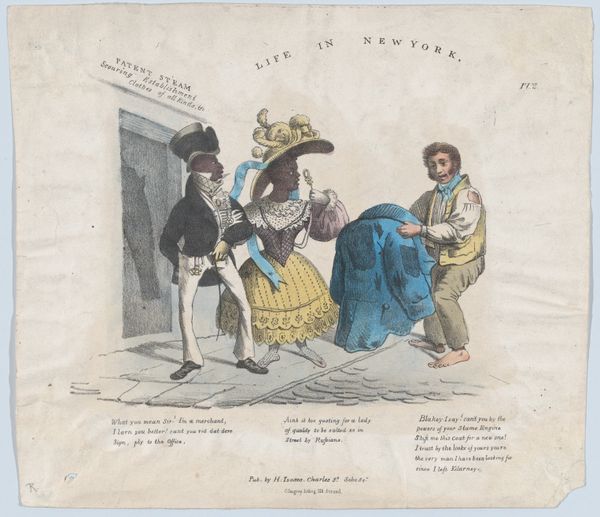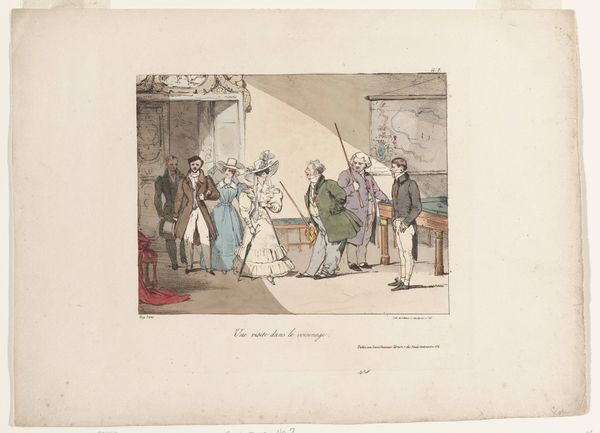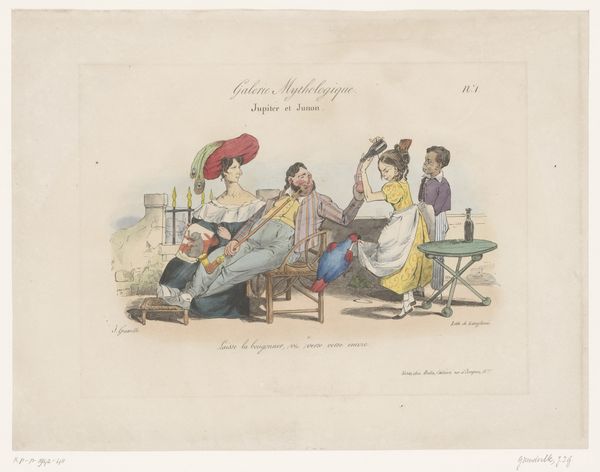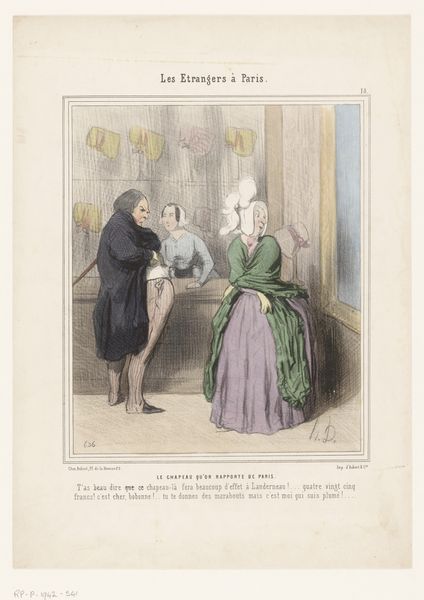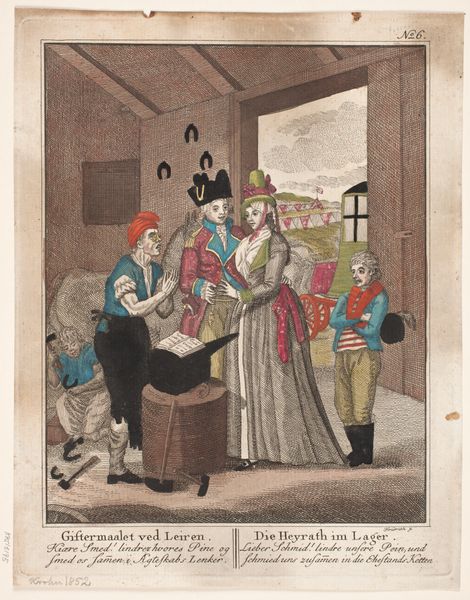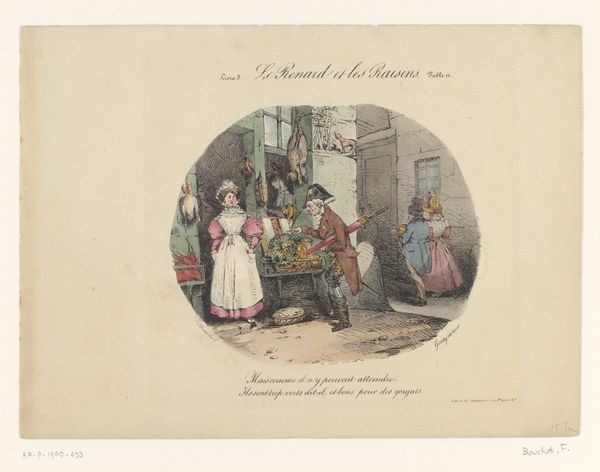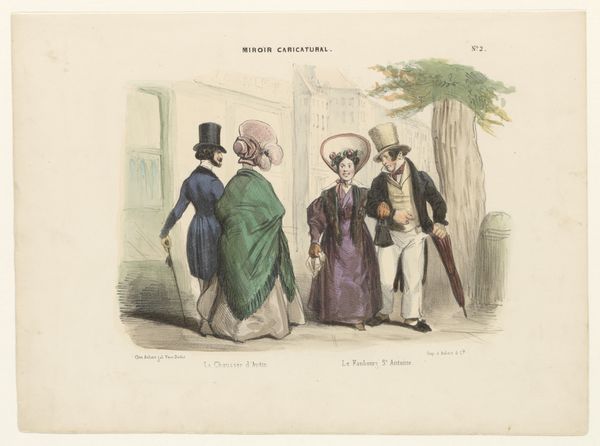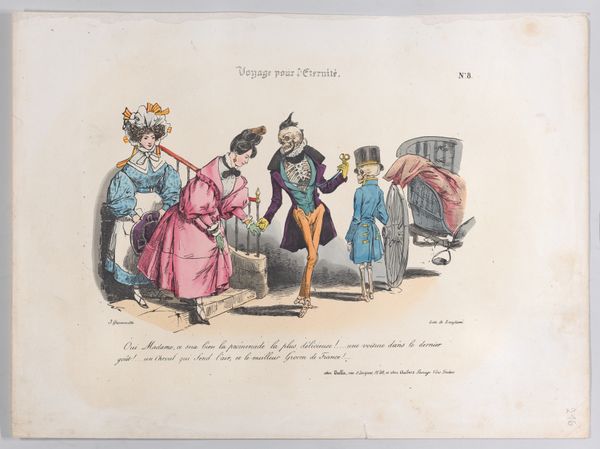
A Miss.- There's a d----d Fine Girl! Come along Tom -- let's have a look at her!- I dare say She's Beautiful! 1 - 1830
0:00
0:00
Dimensions: 10 x 12 in. (25.4 x 30.48 cm) (plate)
Copyright: Public Domain
Curator: This watercolor, likely a print reproduced as a drawing, titled "A Miss - There's a d----d Fine Girl! Come along Tom -- let's have a look at her!- I dare say She's Beautiful!", comes to us from 1830. The printmaker is S. Gans Publishing Co., and it’s currently held at the Minneapolis Institute of Art. Editor: It strikes me as an interesting artifact. A biting commentary on early 19th-century gender perceptions. The exaggeration is key. I imagine it would circulate through prints widely and quickly, accessible to many as a sort of broadsheet. Curator: Exactly. The power dynamics are so clear: the woman's gender presentation is satirized by two men, literally arm-in-arm and cat-calling at her. They are rendered with exaggerated features. But in order to delve into the details, we should examine how these are created in this medium. Editor: You know, the process is interesting. The delicate watercolor wash creates depth on each of the characters while cheap print technology creates an initial drawing—suggesting its rapid production. I imagine the materiality plays a role in shaping public discourse and the accessibility of images like these is not accidental. Curator: The title is dripping with male gaze ideology, isn't it? But is the female form made a spectacle? The artist renders what clearly seems to be a person not abiding by the standards of dress expected in women during that era. So, what statement does that make to the observer? Editor: Well, look at her attire. That ridiculous hat! And she even has a dog, perhaps connoting the luxury accessible only to the higher classes. Every aspect of her public presentation serves the point: high society. But, in comparison, observe those cheaply rendered materials and processes for mass producing a satirical counter-point! Curator: Yes, but this piece seems to underscore that such freedom or divergence in fashion can only be met with ridicule. There’s a historical, even violent, tradition of policing gender presentation that extends right into today's politics. I wonder what people would have made of her in that historical setting. Editor: It does reveal much about material class relations during the Romantic period. The tension lies in creating luxury materials like watercolour and drawings that reproduce commentary in such cheap ways. So that social criticism is at the hands of those that participate within the system. Curator: It’s definitely made me rethink our relationship to fashion policing then and now. Editor: And it also makes me see art materials, their production, labor and availability through whole new lenses, doesn't it?
Comments
No comments
Be the first to comment and join the conversation on the ultimate creative platform.
